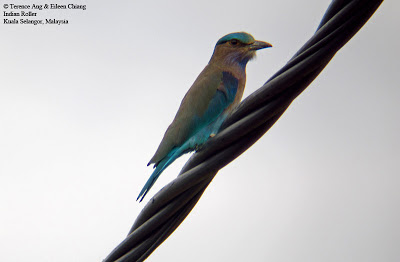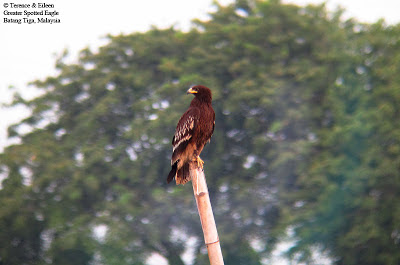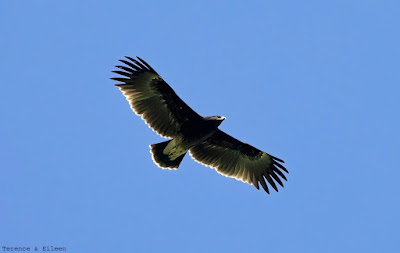Bee-Eater of P.Malaysia (Blue-Throated, Blue-Tailed, Bay Headed, Red Bearded Bee Eater)
General information
World : 24 Species
SEA : 6 Species
Malaysia : 4 species
SEA : 6 Species
Malaysia : 4 species
Common Name
|
Blue-Throated Bee-Eater
|
Blue-Tailed Bee-Eater
|
Chestnut-Headed Bee-Eater
|
Red Bearded Bee-Eater
|
Scientific Name
|
Merops viridis (Linnaeus) 1758
|
Merops superciliosus (Linnaeus) 1766
|
Merops leschenaultia (Vieillot) 1817
|
Nyctyornis amictus (Temminck) 1824
|
Geographical Variation
|
Nominate race of viridris
|
Subspecies philippinus
|
Nominate race od leschenaulti
|
None recognized
|
Description
|
||||
Head and Neck
|
Blue throat, chocolate brown cap and nape
|
Green head and necked, Yellow upper throat, rufous-chestnut patch on
lower throat
|
Chestnut crowned and napes, Throat yellow
|
Overall green plumage, with broad red beard.
Female=> red forehead |
Breast and underpart
|
Lack of gorget
|
Upper breast rufous-chestnut
|
Narrow chestnut gorget across upper breast
|
Belly pale green
|
Back
|
Upper back chocolate brown,
|
Green
|
Upper back chestnut
|
Green
|
Tail
|
Elongated central tail feather
|
Elongated central tail feather
|
Central tail not elongated
|
Underside of tail yellow with broadly black tip
|
Juvenile
|
Cap, nape and upperback dark green, central tail feather not
elongated
|
Chestnut patch on throat and breast paler, Central tail feather not
elongated
|
Duller and easily confuse with Green Bee Eater (Merops orientalis)
|
Head throat and breast green
|
Behaviour and Breeding
|
||||
Behaviour
|
Post breeder venture into more forested area. This is more sighting
during the autumn migration movement which may coincide with local movement.
Can be seen hawking for insect especially during dawn on termites.
Feed mainly on bee, dragonfly and beetle
|
Very similar to Merops viridis (Linnaeus) 1758.
|
Perch on tree branch that serve as a screening perch. Short flight
will be taken to catch the prey and feed on the same perch. Once favourite
perch is detected once and rely on the bird to return to the same perch.
|
Territorial believe at 20ha for every pair.
Perch on clear branches during hunting. Food such as termite, wasps,
and small reptile have been recorded.
|
Breeding
|
Nest in variety of habitat. This include beach dunes (well’s 1999). Communal
nesting where a single bank may accommodate a few nest in one particular
time. Breeding season from February to April and young bird sighted in may
and june
|
Breeding began in February to march with juvenile in April to may.
Both species may use the same place to nest. However is many nest site species does not nest at the same time and one will nest after the other. This require further study. |
Breed in January to February with till mid may.
|
Nest in burrow where well 1999 “one 1.2m deep”. Excavating from
January to February and young flying in June.
|
Status, Distribution and Habitat
|
||||
Status
|
Resident and Migrant
Local Migratory |
Resident and Migrant
Local Migratory |
Resident
|
Resident
|
Distribution
|
Throughout PM
|
Throughout PM
|
West Coast south to central Perak.
Absent in East Coast and Selangor southwards |
Throughout
|
Habitat
|
Open country forest
|
Open country, mangrove, flooded area, river bank, wooded area
|
Wooded country, Open country
|
Forest
|
Reference
Ben F.King & Edwards C.Dickson, 1989, A Field Guide To
The Birds of South-East Asia, Collins, Grafton Street, London
Craig Robson, 2017, A Field Guide To The Birds of South-East
Asia, Bloomsburry, London
Well, David.R, 1999, Birds of The Thai Malay Peninsula Vol
1, Academic Press, London UK








Comments
Post a Comment